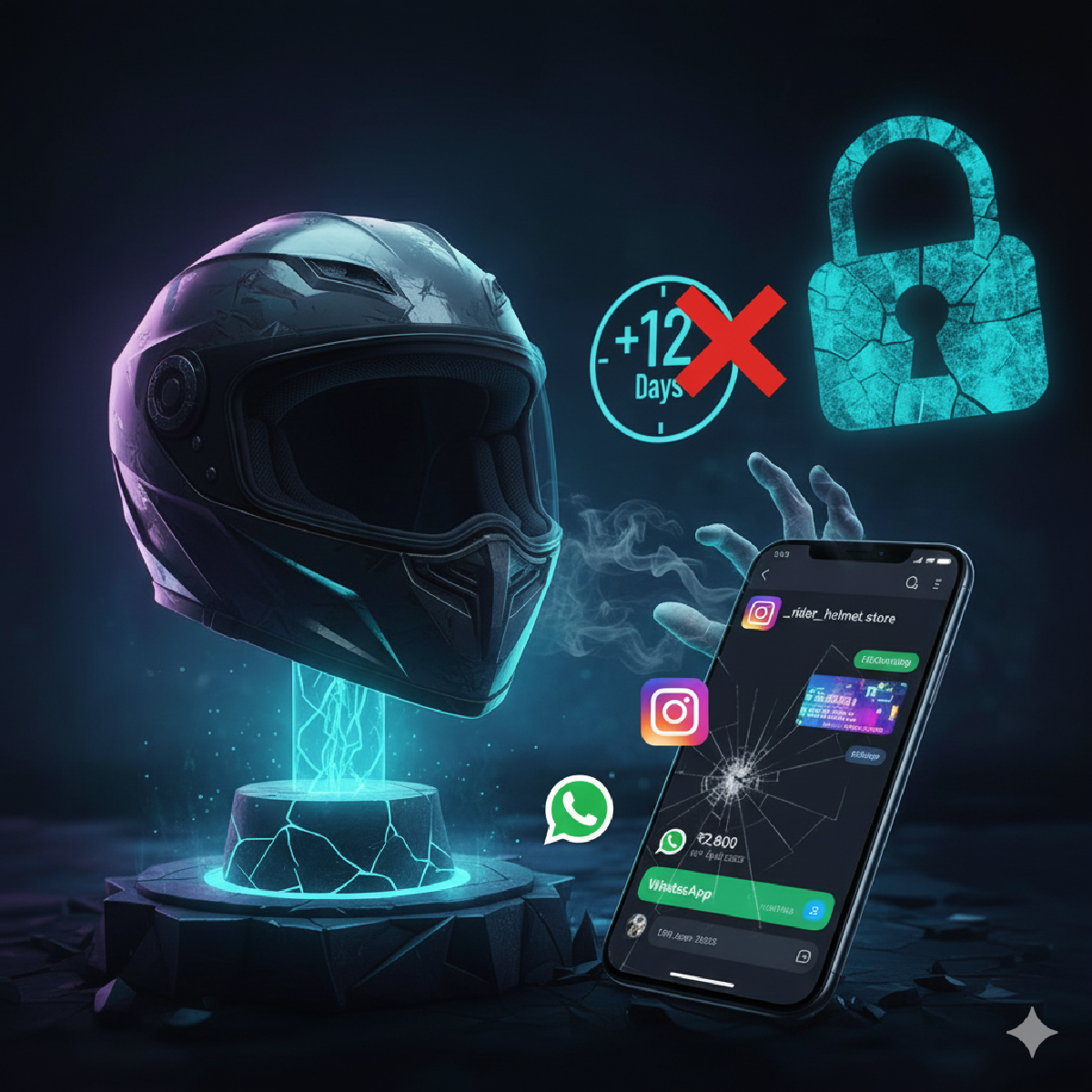My Story: How I Got Scammed#
On 10th April 2025, I found an Instagram business account called rider_helmet_store selling bike accessories. Their profile appeared legitimate, showcasing a large following and customer testimonials. A WhatsApp Business account was linked to the profile, and I was directed there to finalize the purchase.
After discussing the product over WhatsApp, I decided to buy a helmet for ₹2,800. I completed the payment via a digital payment platform, trusting the seller based on their professional communication and seemingly genuine online presence.
However, soon after the transaction, the seller’s phone number was switched off, and both their WhatsApp and Instagram accounts went inactive. It has been over 12 days, and the helmet never arrived. This experience made me realize how sophisticated online scams can appear, even when sellers look legitimate.
How This Online Purchase Scam Happened#
Professional-Looking Social Media Accounts: Scammers create Instagram and WhatsApp Business profiles with attractive posts, high follower counts, and fake testimonials to appear credible.
Communication via WhatsApp: Using WhatsApp for direct messaging gives scammers a personal touch, making buyers feel they are interacting with a trustworthy seller.
Payment Through Digital Platforms: Scammers request payment through UPI, mobile wallets, or bank transfers. Once the payment is completed, they disappear without delivering the product.
Vanishing Act: After the payment, scammers deactivate all communication channels, leaving victims with no way to recover their money.
Warning Signs: When to Exercise Caution#
- 🔴 Unverified Online Sellers: Even accounts with followers and testimonials can be fake.
- 🔴 Pressure to Pay Quickly: If the seller pushes for immediate payment, it is a red flag.
- 🔴 No Official Contact Channels: Legitimate businesses provide customer support through multiple verified channels, not just a personal WhatsApp number.
- 🔴 Too-Good-to-Be-True Deals: Unrealistically low prices or limited-time offers can be a lure to trick buyers.
How to Protect Yourself from Online Purchase Scams#
Verify the Seller:
- Check the official website, verified social media accounts, and online reviews.
- Look for multiple trusted references beyond social media testimonials.
Use Secure Payment Methods:
- Pay only through official e-commerce platforms or payment gateways that offer buyer protection.
- Avoid direct bank transfers, UPI payments, or mobile wallet payments to unknown sellers.
Be Skeptical of Offers on Social Media:
- Do not trust sellers solely based on follower counts or flashy posts.
- Cross-check the legitimacy of the seller before making any payment.
Document Everything:
- Keep a record of conversations, payment receipts, and any screenshots for reporting purposes.
Report Fraud Immediately:
- Contact your bank or payment platform to report the transaction.
- File a complaint with cybercrime authorities if you suspect fraud.
Takeaway#
Online shopping can be convenient, but it also exposes buyers to risks if caution is not exercised. Scammers are increasingly sophisticated, using social media and direct messaging to appear trustworthy. Always verify the seller, use secure payment channels, and remain alert to suspicious behavior to avoid falling victim to such frauds.

